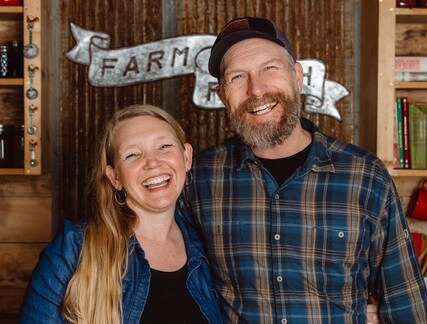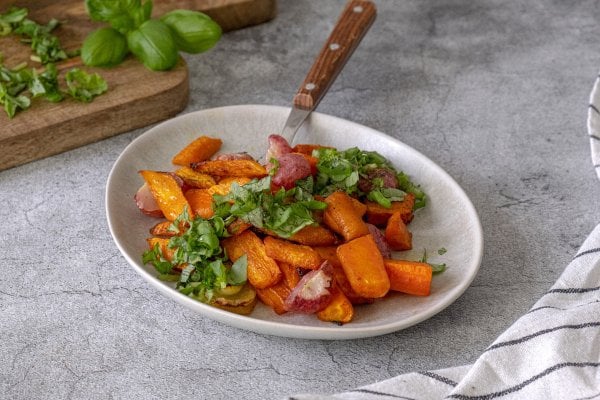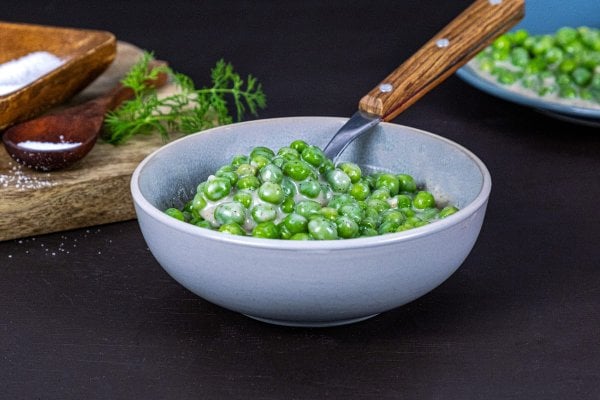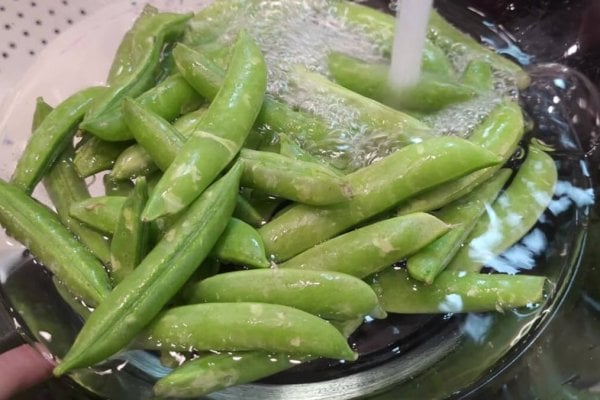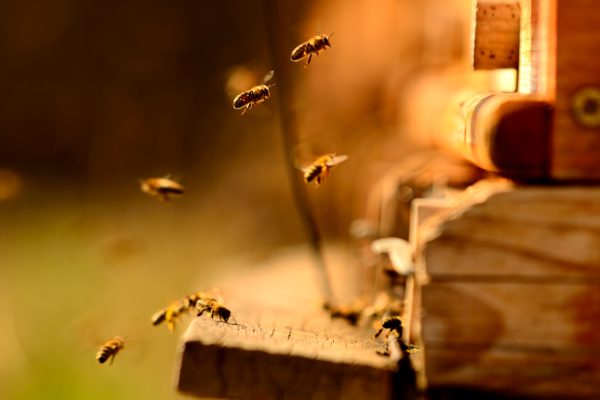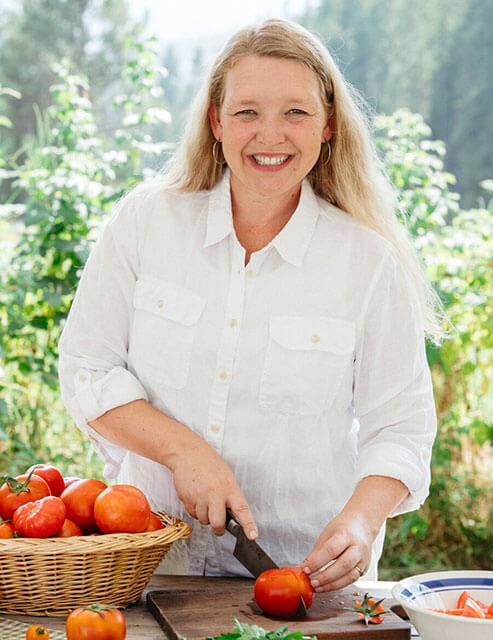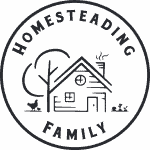


Have you ever wondered what the pantry of a family of 13 looks like? Come take a pantry tour with me as I show you our food storage supply, our make-shift root cellar, our bulk bin food storage, our freezers and even our cold storage room. Plus, be the first to see our pantry expansion project of 2024, where we doubled our pantry storage.
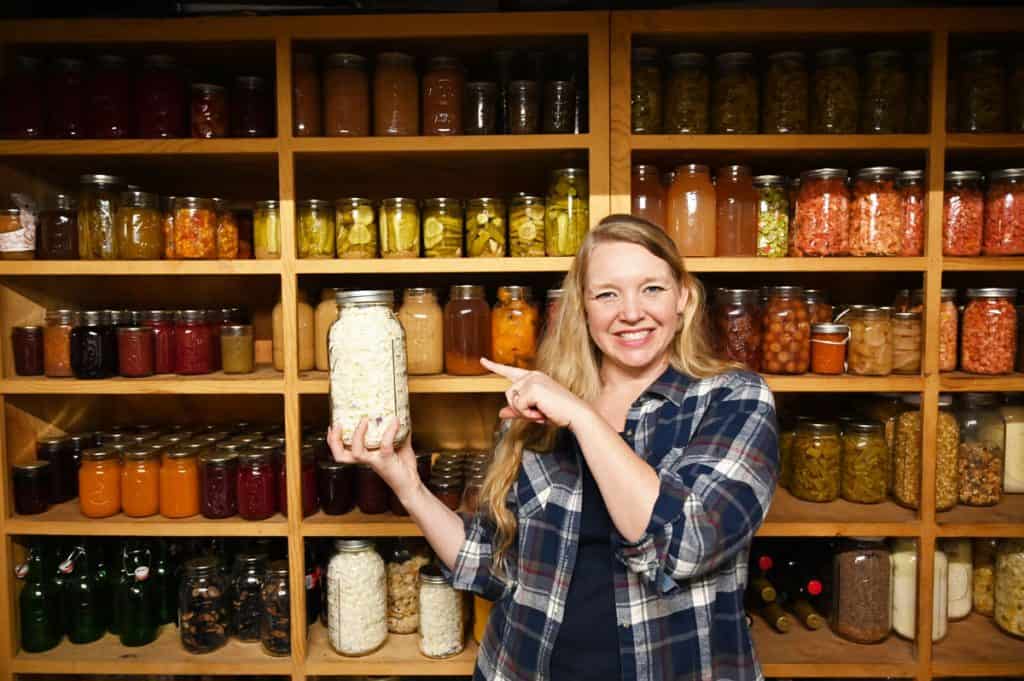
In this post, you’ll see a few of the pantry tour videos I’ve done over the years. The most recent video is of our pantry expansion project. Then, further down in the post, you can see our previous year’s pantry tours, where I show how we continually manage (or do our best to manage) the food we bring in during the summer and fall to get us through clear to harvest again.
We hope videos and posts like this help inspire you to start preserving food and getting ahead. This is truly the best way to beat inflation at the grocery store and build some financial resiliency in your home.
We’re storing everything: freeze dried food (read my 1-year review of our freeze dryer here), dehydrated food, home-canned food, fermented food, frozen food, and even root-cellared food (learn how to store vegetables WITHOUT a root cellar here). We hope our in-ground stone root cellar build will be completed soon!
Watch our Pantry Expansion video below:
We’ve recently added a cheese cave to our preservation systems as well as a make-shift root cellar. We realized this year we could have put up just a bit more cheese to get us through the year. However, spring is on its way and we know the cow will be providing plenty of fresh milk again soon.
As for our root cellar, we’ve been utilizing the exterior stairwell to our basement. It has storm doors that we’ve insulated with a blanket and interior doors to keep out the excess heat from the basement. This has worked exceptionally well this year. Our carrots and beets are still crisp, our potatoes aren’t sprouting, and we’ve been testing a cabbage harvested from the 2023 garden to see how long it will last. So far, it’s still going strong in March of 2024. That’s a huge win for us!
Watch our 2024 pantry tour video below:
Main Pantry
In our main pantry area, we store all of our home-canned food as well as our freeze dried and dehydrated food.
We also like to store some of our bulk goods, such as maple syrup, olive oil, and different kinds of vinegar. We buy large quantities of the store-bought items we don’t yet grow enough of here on the homestead. You may also want to read my post on the 7 pantry staples I’m never without.
Our favorite place to purchase bulk goods is Azure Standard. They have a lot of organic products at a great wholesale price (when buying in bulk). Homesteading Hack: If you’re a first-time Azure Standard customer, use coupon code “HOMESTEADINGFAMILY15” at checkout for 15% off your order of $100 or more!
Watch our 2023 pantry tour video below:
Here are some of our favorite recipes and tutorials that I mention in the video so you can bookmark them and come back to them after harvest:
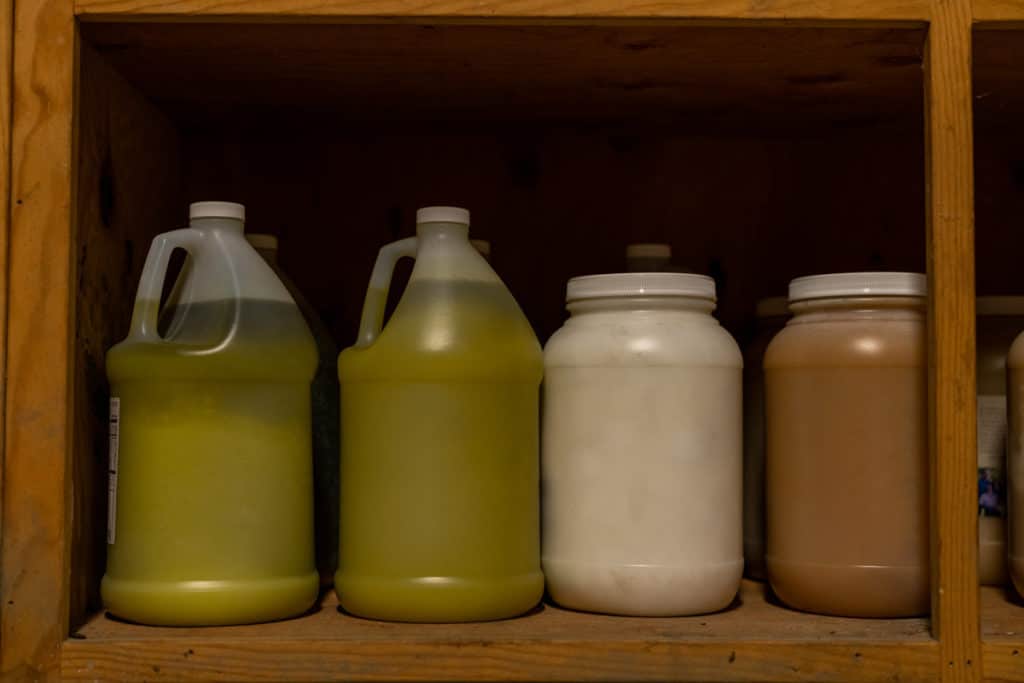
Bulk Storage
When it comes to our staple foods that we can’t grow ourselves on the homestead, we rely on Azure Standard. We prefer to order in bulk (this always saves money), and then we store them in large containers like five-gallon buckets with gamma seal lids and 55-gallon drums.
These are items like olive oil, honey, coconut oil, gluten-free flour and canned items we can’t grow and preserve ourselves.
In the drums, we store items such as hard white wheat, dry beans, oats, oat groats, salt, and sugar so we can stay ahead of the curve and save money for items we know we’ll always need.
In the five-gallon buckets, we store other items we don’t need in large quantities. Items like baking soda, flaxseed, our limed eggs (aka water-glassed eggs), and anything else that falls into that smaller item category.
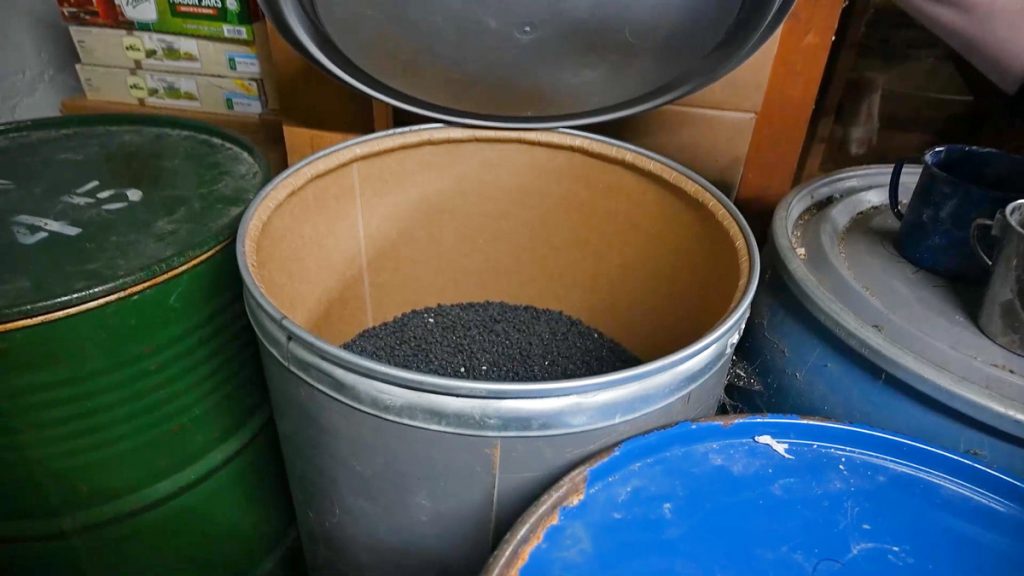
Harvest Kitchen
Though this isn’t quite a “storage area,” we do still store some of our canned goods as well as our ferments in the harvest kitchen. We keep some of our braided garlic and onions ready for easy access as well.
This is the area you see most often because it’s where Josh and I do our Pantry Chats, and I usually do my teaching videos from this space as well. It’s a fully functioning kitchen, but it’s down in our basement, so the temperature stays just a bit cooler than in our regular kitchen.
Watch our 2022 pantry tour video below:
Sometimes in a home, especially if storage space is limited, it’s good to think outside the box for different areas where you might be able to store some food. Under the bed, in the back of a closet, in cooler rooms of the home (especially homes with exterior walls), etc.
These areas can sometimes double as cold storage if the temperatures are right.
Here are some of our favorite fermented recipes:
- Fermented Limes
- Fermented Lemons
- Pizza Beans (Fermented Green Beans)
- Sauerkraut
- Kombucha
- Fermented Ginger Carrots
- Fermented Tomatoes
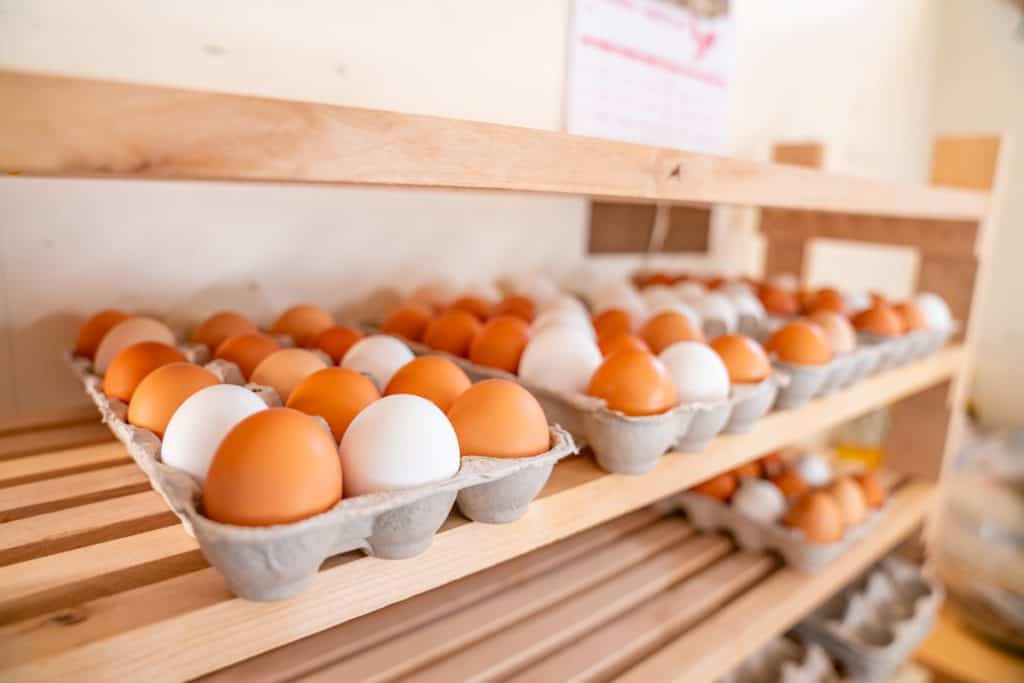
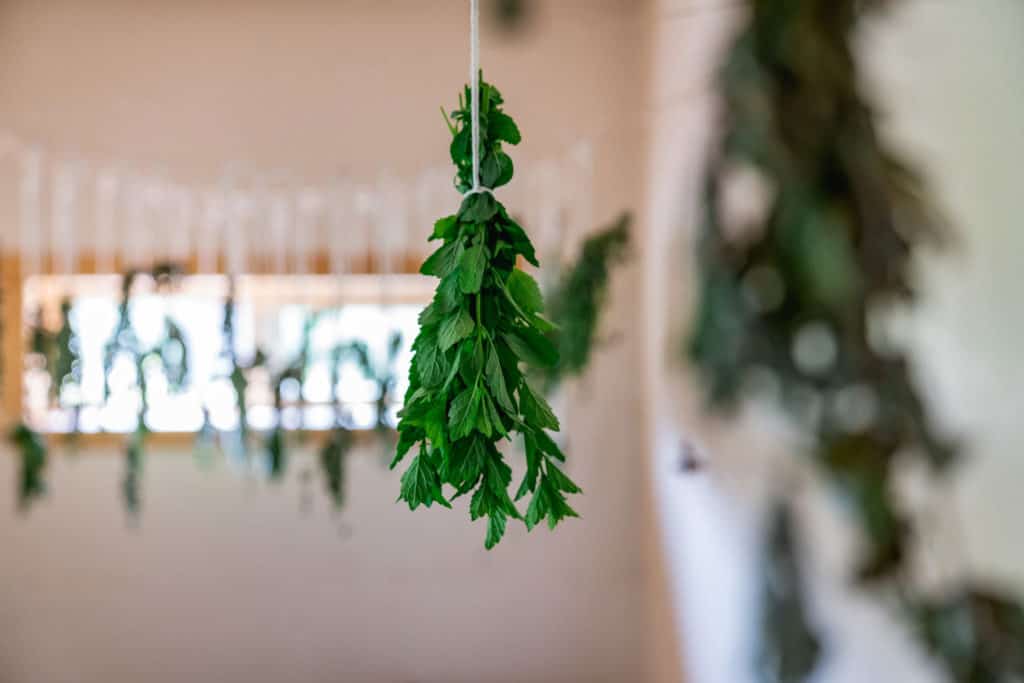
Cold-Storage Room
This room is a place I’m very excited to have in this house, it’s right off the main kitchen, but it’s on an exterior wall with a door to close it off to the house. When I open up both windows, I essentially have a large walk-in refrigerator that can store various items all winter long.
I also have a large rack that holds all of our farm eggs (here are five ways to use or preserve extra eggs), multiple large buckets of food that we need to grab frequently (sugar, flour, various oils, etc.), and my extra homemade herbed garlic salt and onion powder.
I even hang my dried herbs from the ceiling to grab all year long! This year I’m excited to use this space for curing bacon. You can check out our post on how to cure bacon here.

Freezers
Our chest freezers are out in the garage and we have a total of four chest freezers. Because we raise or harvest most of our meat here on the homestead, and we have 12 people (usually more) that we’re feeding every day, we need to have a way to keep it all organized.
We designate each freezer for a specific animal (or a couple of animals) to keep it all organized and easy to find. This means a designated freezer for pork and venison, one for lamb and beef (as well as fat for rendering into lard or tallow), one for poultry like chickens and duck.
The final freezer that’s about half the size of our larger freezers is where we store all of our homemade dairy products. Items like homemade butter, frozen milk, and even some cheeses like mozzarella that tend to freeze well.
If you feel like you’re ready to start storing more of your own food, be sure to check out our posts on foods you should not freeze and how to build up your food supply and properly store it for long-term storage.

Other Posts You May Enjoy
- Preservation Tools on a Budget
- My Secret to Running a Productive Household
- Household Management Video Series
- How to Get 3 Home-Cooked Meals on the Table Every Day
- Meal Planning on the Homestead (Eating Seasonally)
- Yearly Planning on the Homestead
- Emergency Preparedness – 9 Tips to be Ready
- Direct Primary Care – Going “Off-Grid” With Your Health
- Affordable Clothing for the Homestead
- Laundry Strategies – How to Keep Up (Large or Small Family)

